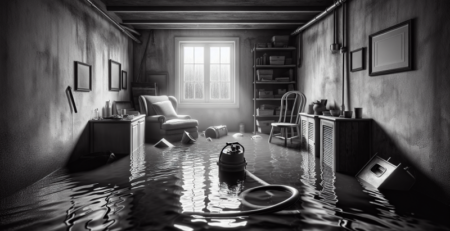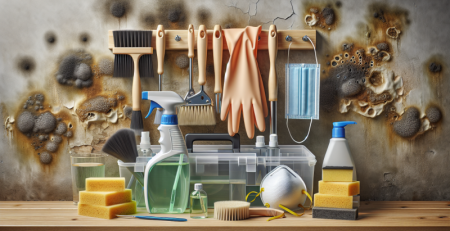How to Choose the Right Insurance for Your Home
Choosing the right insurance for your home is a crucial step in protecting your most valuable asset. With the unpredictable nature of disasters such as floods, fires, and mold infestations, understanding your insurance options can save you from significant financial loss and stress. At Kraus Restoration, NJ’s leaders in water damage restoration, we recognize the importance of having comprehensive coverage that aligns with your specific needs. Whether you’re a homeowner or a property manager in Central and Northern New Jersey, knowing how to navigate the complexities of home insurance is essential. In this guide, we will explore key factors to consider when selecting the right insurance policy, including coverage types, deductibles, and the importance of working with IICRC certified experts like us for restoration services. By making informed decisions, you can ensure that your home is well-protected against unforeseen events, allowing you to focus on what truly matters—your family’s safety and well-being.
Understanding Different Types of Home Insurance Coverage
When it comes to protecting your home, understanding the various types of home insurance coverage is crucial. Home insurance is designed to provide financial protection against damage to your home and personal belongings, as well as liability for injuries that occur on your property. However, not all home insurance policies are created equal, and knowing the differences can help you choose the right coverage for your needs.
Home insurance typically falls into several categories, each offering different levels of protection. The most common types of coverage include dwelling coverage, personal property coverage, liability coverage, and additional living expenses coverage.
Dwelling coverage is the core of any home insurance policy. It protects the physical structure of your home from various risks, such as fire, theft, vandalism, and certain natural disasters. According to the Insurance Information Institute, about 80% of homeowners do not have enough insurance to cover the full cost of rebuilding their homes after a disaster. This statistic underscores the importance of ensuring that your dwelling coverage limits are adequate to cover the replacement cost of your home.
Personal property coverage protects your belongings inside the home, such as furniture, electronics, and clothing. This coverage typically extends to personal items even when they are outside your home, such as when you travel. However, it is essential to understand that certain high-value items, like jewelry or art, may have limited coverage under a standard policy. Homeowners may need to purchase additional endorsements or riders to ensure these items are fully protected.
Liability coverage is another critical component of home insurance. It protects you in the event that someone is injured on your property and decides to sue you for damages. This coverage can help pay for legal fees and any settlements or judgments against you. The average cost of a liability claim can be substantial, making this coverage essential for homeowners. The National Association of Insurance Commissioners reports that the average liability claim payout is around $30,000, highlighting the financial risks involved.
Additional living expenses coverage, also known as loss of use coverage, provides financial assistance if you are temporarily unable to live in your home due to a covered loss. This can include costs for hotel stays, meals, and other living expenses while your home is being repaired. Understanding this coverage is vital, especially in areas prone to natural disasters where homes may be uninhabitable for extended periods.
When selecting a home insurance policy, it is also important to consider the different types of policies available. The most common types include HO-1, HO-2, HO-3, and HO-5 policies. An HO-3 policy is the most popular among homeowners, as it provides comprehensive coverage for the dwelling and personal property, covering all perils except those specifically excluded in the policy. On the other hand, an HO-1 policy offers very limited coverage and is rarely used today.
Another factor to consider is the deductible, which is the amount you will pay out of pocket before your insurance coverage kicks in. Higher deductibles often result in lower premiums, but they also mean you will pay more in the event of a claim. It is essential to find a balance that works for your financial situation.
In addition to these standard coverages, homeowners should also be aware of optional coverages that can enhance their policies. For instance, flood insurance is not typically included in standard home insurance policies, but it is essential for homeowners in flood-prone areas. According to FEMA, about 20% of flood claims come from properties outside high-risk flood zones, making it a wise consideration for many homeowners.
Another optional coverage is earthquake insurance, which is crucial for homeowners in seismically active regions. The cost of earthquake damage can be devastating, and standard home insurance policies usually do not cover this risk.
In conclusion, understanding the different types of home insurance coverage is vital for homeowners looking to protect their investment. By familiarizing yourself with the various coverages available, including dwelling, personal property, liability, and additional living expenses, you can make informed decisions about the right policy for your needs. Additionally, considering optional coverages like flood and earthquake insurance can provide peace of mind in the face of unforeseen events. For more information on how to choose the right insurance for your home, visit our about page or explore our services to see how we can assist you in protecting your home. Remember, the right insurance coverage is not just a safety net; it is a crucial part of responsible homeownership.
For further reading on home insurance and its importance, consider checking out resources from the Insurance Information Institute and the National Association of Insurance Commissioners.
Key Factors to Consider When Selecting an Insurance Provider
When selecting an insurance provider for your home, there are several key factors to consider that can significantly impact your coverage, costs, and overall satisfaction. First and foremost, it is essential to assess the financial stability and reputation of the insurance company. Researching the provider’s history, customer reviews, and ratings from independent agencies can give you insight into their reliability and ability to pay claims. A financially stable company is more likely to be around when you need them most, ensuring that your claims are handled efficiently and effectively.
Next, consider the types of coverage offered by the insurance provider. Home insurance policies can vary widely in terms of what they cover. Look for a provider that offers comprehensive coverage options, including protection against natural disasters, theft, liability, and personal property damage. Understanding the specifics of what is included in the policy is crucial, as some providers may offer lower premiums but exclude essential coverage that you may need.
Another important factor is the level of customer service provided by the insurance company. A provider that is responsive and helpful can make a significant difference, especially during the claims process. Evaluate their customer service channels, such as phone support, online chat, and email, and consider reaching out with questions to gauge their responsiveness. Additionally, check if they have a user-friendly online portal for managing your policy and filing claims.
Cost is also a critical consideration when selecting an insurance provider. While it may be tempting to choose the cheapest option available, it is important to balance cost with coverage quality. Obtain quotes from multiple providers and compare not only the premiums but also the deductibles and coverage limits. Some companies may offer discounts for bundling policies or for having security features in your home, so be sure to inquire about any potential savings.
Lastly, consider the claims process of the insurance provider. A straightforward and transparent claims process can save you time and stress in the event of a loss. Look for reviews or testimonials that specifically mention the claims experience, and ask the provider about their average claim processing time. A company that prioritizes quick and fair claims handling can provide peace of mind knowing that you will be supported when you need it most.
In conclusion, choosing the right insurance provider for your home involves careful consideration of several key factors, including financial stability, coverage options, customer service, cost, and the claims process. By taking the time to research and compare different providers, you can find an insurance company that meets your needs and offers you the protection and support you deserve. For more information on how to protect your home and the services we offer, visit our about page or explore our services to learn more about our comprehensive solutions. If you have any questions, feel free to contact us for assistance.
In conclusion, selecting the right insurance for your home is a crucial decision that requires careful consideration of various factors. Start by assessing your specific needs, including the value of your home and belongings, as well as any unique risks associated with your location. Take the time to compare different policies and providers, paying close attention to coverage options, deductibles, and premiums. Don’t hesitate to ask questions and seek clarification on any terms or conditions that may be unclear. Additionally, consider the reputation and customer service of the insurance company, as these can significantly impact your experience during the claims process. By taking these steps, you can ensure that you choose a policy that not only protects your investment but also gives you peace of mind. Remember, the right insurance is not just about meeting legal requirements; it’s about safeguarding your home and everything you hold dear.










